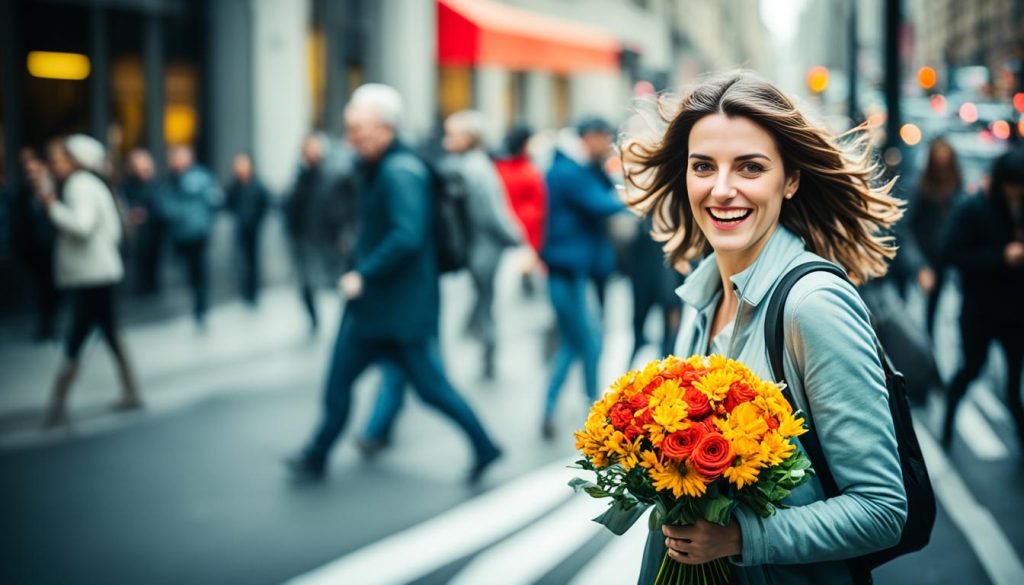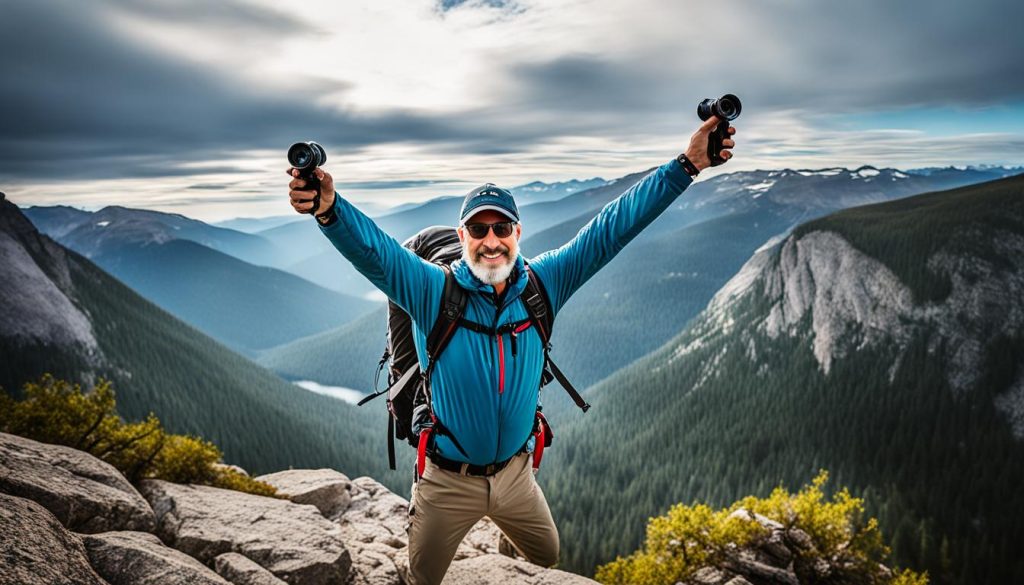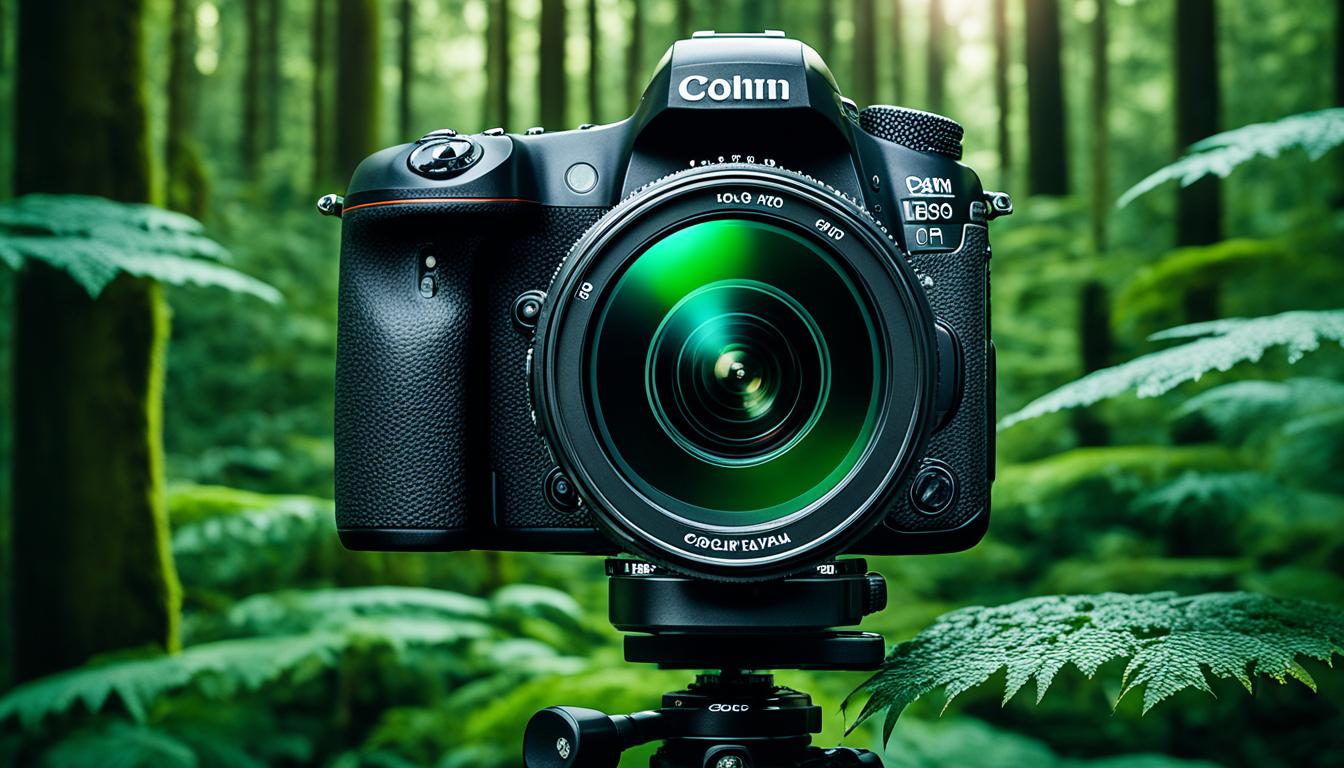Capture Life Moments about Explore Premium Camera Equipment for Professional Results
Owning premium camera equipment is essential for photographers who want to achieve professional-level results. Whether you’re a part-time hobbyist or a full-time professional photographer, investing in top-quality camera gear can make a significant difference in the quality of your images. With high-end photography equipment, such as professional-grade cameras and lenses, you’ll have the tools necessary to capture stunning, professional-grade images. Premium camera equipment offers advanced features, superior build quality, and exceptional performance, allowing photographers to achieve their creative vision with ease.
Key Takeaways:
- Investing in premium camera equipment can significantly improve the quality of your images.
- High-end photography equipment offers advanced features and superior performance.
- Professional-grade cameras and lenses are essential for achieving professional-level results.
- Premium camera equipment allows photographers to capture stunning, professional-grade images.
- Superior build quality ensures durability and long-term usage of premium camera equipment.
The Importance of Camera Equipment Insurance
Camera equipment insurance is crucial for photographers, regardless of their level of experience or the type of photography they specialize in. Owning high-quality camera gear is a significant investment, and the cost of replacing or repairing equipment can be overwhelming. That’s where camera equipment insurance comes in.
Camera equipment insurance provides coverage and protection for your tangible property, including cameras, lenses, lighting equipment, and other essential tools of the trade. It safeguards your photography equipment from various risks and potential liabilities, ensuring that you can continue pursuing your passion without financial burden or setbacks.
With camera equipment insurance, you can rest easy knowing that you are protected against potential damage, loss, or theft. It covers a wide range of scenarios, including accidents caused by third parties, natural disasters like fires or floods, and even theft or vandalism. By having this insurance, you can focus on capturing stunning images while having peace of mind that your equipment is protected.
Equipment Coverage
Camera equipment insurance typically offers comprehensive coverage that extends beyond the basics. It includes protection for a variety of photography tools and accessories, such as:
- Cameras (including DSLRs, mirrorless cameras, and film cameras)
- Lenses (wide-angle, telephoto, prime, zoom, etc.)
- Lighting equipment (strobes, speedlights, continuous lights)
- Accessories (tripods, filters, memory cards, etc.)
By insuring your equipment, you ensure that every crucial piece of gear is covered, minimizing any potential financial losses in the event of an incident.
Protection Against Liability Risks
Camera equipment insurance not only protects your gear but also shields you from potential liability risks. For example, if someone trips over your tripod during a photoshoot and gets injured, you may be held responsible for their medical expenses and other related costs. Camera equipment insurance includes liability coverage, ensuring that you’re protected against such claims and preventing them from jeopardizing your photography business.
Damage to Equipment and Theft Protection
Accidents happen, and even the most careful photographers may experience equipment damage. Whether it’s a dropped lens or water damage from shooting in challenging weather conditions, camera equipment insurance covers repairs or replacement costs, keeping your photography business up and running.
In addition to damage protection, camera equipment insurance provides coverage against theft. Photographers often carry expensive gear with them, making them potential targets for thieves. With camera equipment insurance, you have the peace of mind knowing that your equipment is protected against theft and that you can quickly recover and continue your photography endeavors.
Investing in camera equipment insurance is a smart decision for any photographer. It not only safeguards your valuable gear but also protects your business and livelihood. Don’t let unexpected incidents derail your photography journey—get camera equipment insurance and focus on capturing moments that matter.
Note: The image above represents the importance of camera equipment insurance in protecting your valuable gear.
Understanding Motion Photography Techniques
Motion photography is an exciting technique that allows photographers to capture the dynamic and fluid nature of movement in their images. By using specific camera settings and techniques, photographers can convey a sense of motion and freeze action to create compelling and visually stunning photographs.
One of the key elements in motion photography is understanding shutter speed. Shutter speed refers to the amount of time the camera’s shutter remains open to capture the image. It determines how long the camera sensor is exposed to light and thus affects the amount of motion blur or freezing action in the final photograph.
To freeze action and capture a definitive moment, photographers need to use fast shutter speeds. These are typically 1/2000th of a second or faster and allow for a crisp and sharp image. This is particularly useful when photographing sports or fast-moving subjects where capturing every detail is crucial.
On the other hand, slow shutter speeds ranging from 1/30th of a second to several seconds allow photographers to create motion blur. This technique is commonly used to convey a sense of movement and can produce captivating results when photographing waterfalls, flowing traffic, or long-exposure night shots.
To easily control the shutter speed, many cameras offer a Shutter Priority mode. This mode allows photographers to manually set the desired shutter speed while the camera automatically adjusts the aperture to maintain proper exposure. It simplifies the process of capturing motion by focusing on the primary setting that influences the desired effect.
Whether it’s freezing action or creating motion blur, understanding motion photography techniques and experimenting with different shutter speeds can unlock a world of creative possibilities. The key is to practice, explore various scenarios, and find the perfect balance between freezing action and capturing motion blur to achieve stunning and expressive images.
Through motion photography techniques, photographers can go beyond static images and create visually captivating photographs that tell a story of movement and energy. Experiment with different shutter speeds, embrace the excitement of freezing action or capturing motion blur, and unlock the full potential of motion photography.
Tips for Capturing the Decisive Moment in Street Photography
Street photography is an art that revolves around capturing the decisive moment. It’s that fleeting moment when everything aligns perfectly, encapsulating the essence of a scene. To master this technique and consistently capture powerful images, photographers need to develop certain skills and techniques.
Spotting interesting scenes: One of the most important skills in street photography is the ability to spot unique and captivating scenes as they unfold. Train your eye to look beyond the obvious and find beauty in the mundane. Pay attention to patterns, interesting light conditions, and intriguing human interactions.
Familiarity with your camera: To capture the decisive moment, you need to be intimately familiar with your camera and its settings. Practice using your camera regularly to become quick and efficient in adjusting exposure, focus, and other key settings on the fly.
Composition techniques: Strong composition is crucial in street photography to guide the viewer’s eye and convey the intended message. Experiment with the rule of thirds, leading lines, and incorporating layers to create visually compelling images. Remember, composition can make or break a photograph.
Overcoming fear: Street photography often involves shooting in public spaces, which can be intimidating for some photographers. Overcoming the fear of shooting strangers and embracing the unpredictability of the streets is essential. Remember that most people are flattered to be photographed, and capturing genuine moments is worth stepping out of your comfort zone.
Focus and concentration: Street photography requires keen focus and concentration to anticipate and capture the decisive moment. Keep your mind in the present moment and be ready to react quickly when a compelling scene unfolds. Practice mindfulness techniques to enhance your ability to stay focused in the midst of chaos.
By honing your skills in spotting interesting scenes, familiarizing yourself with your camera, employing effective composition techniques, overcoming fear, and developing focus and concentration, you can increase your chances of capturing powerful and meaningful images on the streets. Remember, practice is key, so get out there and keep shooting!
| Key Tips for Capturing the Decisive Moment in Street Photography |
|---|
| 1. Spot interesting scenes as they occur |
| 2. Familiarize yourself with your camera and settings |
| 3. Employ effective composition techniques |
| 4. Overcome fear and step out of your comfort zone |
| 5. Develop focus and concentration |

Setting Up Your Camera for Decisive-Moment Photography
When it comes to capturing decisive moments in photography, having a quick and responsive camera is essential. The last thing you want is to miss that perfect shot due to shutter lag or slow camera settings. Here are some tips to help you set up your camera for capturing those decisive moments with precision:
- Choose a Quick and Responsive Camera: Opt for a camera that has minimal shutter lag and fast burst mode capabilities. This will ensure that you can capture the moment as it happens without any delay.
- Utilize Prime Lenses: Prime lenses are known for their fast autofocus and wider apertures, making them perfect for shooting fast-moving subjects. They offer superior image quality and enhance the speed of capturing the decisive moment.
- Familiarize Yourself with Camera Settings: Take the time to explore and understand your camera’s settings. This will enable you to make quick adjustments on the fly, ensuring that you never miss a moment.
- Make Quick Adjustments: Practice adjusting your camera settings swiftly. Knowing how to adjust exposure compensation, ISO, and aperture without hesitation will allow you to adapt to changing lighting conditions and capture the perfect shot.
- Take Advantage of Burst Mode: Burst mode, also known as continuous shooting mode, allows you to capture multiple frames in rapid succession. It increases your chances of getting that split-second perfect shot.
- Use a Fast and Reliable Memory Card: Ensure you have a memory card with a fast write speed to avoid any delay in storing images. This will enable you to keep shooting uninterrupted.
By setting up your camera with these considerations in mind, you’ll be well-equipped to capture decisive moments with ease and precision.
| Aspect | Recommendation |
|---|---|
| Camera | Choose a camera with minimal shutter lag and fast burst mode capabilities. |
| Lenses | Utilize prime lenses for their fast autofocus and wider apertures. |
| Camera Settings | Familiarize yourself with your camera’s settings and practice making quick adjustments. |
| Adjustments | Be prepared to make quick adjustments to adapt to changing conditions. |
| Burst Mode | Take advantage of burst mode to increase your chances of capturing the perfect moment. |
| Memory Card | Use a fast and reliable memory card with a high write speed. |

Mastering Composition Techniques for Decisive-Moment Photography
A strong understanding of composition is vital for capturing compelling decisive-moment photographs. Composition skills help photographers frame their subjects in a visually pleasing way, leading to more impactful images. By employing various techniques, photographers can enhance the composition and draw the viewer’s attention to the key elements of the scene.
One fundamental technique is the rule of thirds. By dividing the frame into nine equal parts with two horizontal and two vertical lines, photographers can position the main subjects along these lines or at their intersections, creating a more balanced and visually pleasing composition.
Another effective technique is the use of leading lines. These are lines that guide the viewer’s eye into the image and towards the main subject. Examples of leading lines include roads, rivers, fences, or any other elements that create a clear path or direction within the frame.
Incorporating layers is another composition technique that can add depth and complexity to an image. By including foreground, middle ground, and background elements, photographers can create a sense of depth and dimension, making the photo more engaging.
To further improve their composition skills, photographers should study other photographers and analyze their work. By observing how successful photographers frame their subjects, use different angles, or incorporate unique elements, photographers can gain valuable insights and inspiration to apply in their own work.
Quotes:
“Composition is a powerful tool for photographers to create impactful images. By using techniques like the rule of thirds, leading lines, and layering, photographers can guide the viewer’s eye and create visually pleasing arrangements.” – John Adams, professional photographer
“Studying the work of other photographers is essential for developing your composition skills. Analyze their techniques, learn from their approach, and apply those lessons to your own photography.” – Mary Thompson, award-winning photographer
With practice and an eye for aesthetically pleasing arrangements, photographers can elevate their decisive-moment photography to new heights, capturing powerful and meaningful moments that resonate with viewers.
Composition Techniques for Decisive-Moment Photography:
| Technique | Description |
|---|---|
| Rule of Thirds | Dividing the frame into nine equal parts and positioning the main subjects along the lines or their intersections |
| Leading Lines | Using lines within the frame to guide the viewer’s eye towards the main subject |
| Incorporating Layers | Creating depth and dimension by including foreground, middle ground, and background elements |
By mastering these composition techniques and continually refining their skills, photographers can capture decisive moments with impact and create photographs that tell compelling stories.
Conclusion
Capturing decisive moments in photography is a skill that requires a combination of technical expertise, artistic creativity, and dedicated practice. However, to achieve professional results consistently, investing in premium camera equipment is essential.
With top-quality gear, photographers have the tools necessary to capture stunning images that stand out. Professional-grade cameras and lenses, along with other premium camera equipment, offer advanced features, superior build quality, and exceptional performance. This allows photographers to unleash their creative vision and produce images with impressive clarity, sharpness, and detail.
In addition to having the right gear, understanding and mastering key techniques such as motion photography and composition play a crucial role in capturing decisive moments. By learning to control shutter speed, photographers can freeze action or create motion blur to convey a sense of movement. Likewise, applying composition principles such as the rule of thirds, leading lines, and incorporating layers can elevate the visual impact of the image.
Ultimately, by honing their skills, embracing a decisive moment mindset, and leveraging the power of premium camera equipment, photographers can consistently create captivating photographs that evoke emotion and leave a lasting impression on viewers.
FAQ
Why is it important to invest in premium camera equipment?
Owning top-quality camera gear can significantly enhance the quality of your images and help you achieve professional-level results.
What is camera equipment insurance, and why is it crucial?
Camera equipment insurance provides protection for your valuable photography tools, covering risks such as damage, theft, and accidents. It safeguards your investment and protects your business from potential financial harm.
How can I capture motion in my photography?
Adjusting the shutter speed is key to capturing motion. Fast shutter speeds freeze action, while slow shutter speeds create motion blur. Utilizing the shutter priority mode allows you to control the shutter speed while the camera adjusts the aperture for proper exposure.
How can I capture the decisive moment in street photography?
To capture the decisive moment, develop skills in spotting interesting scenes, familiarize yourself with your camera and settings, employ effective composition techniques, and overcome fear. Focus and concentration are crucial for anticipating and capturing meaningful moments in the chaos of the streets.
How can I set up my camera for decisive-moment photography?
Ensure you have a quick and responsive camera with minimal shutter lag and fast burst mode capabilities. Utilize prime lenses for increased speed. Familiarize yourself with your camera’s settings, be able to make quick adjustments on the fly, and use a fast and reliable memory card for uninterrupted shooting.
What are some composition techniques for capturing the decisive moment?
Mastering composition skills, such as the rule of thirds, leading lines, and incorporating layers, can enhance the visual impact of your images. Study the work of other successful photographers to gain insights into effective composition techniques.
How can I achieve professional results in decisive moment photography?
By investing in premium camera equipment and combining technical skills, creativity, and practice, you can consistently capture meaningful and powerful images that stand out.
